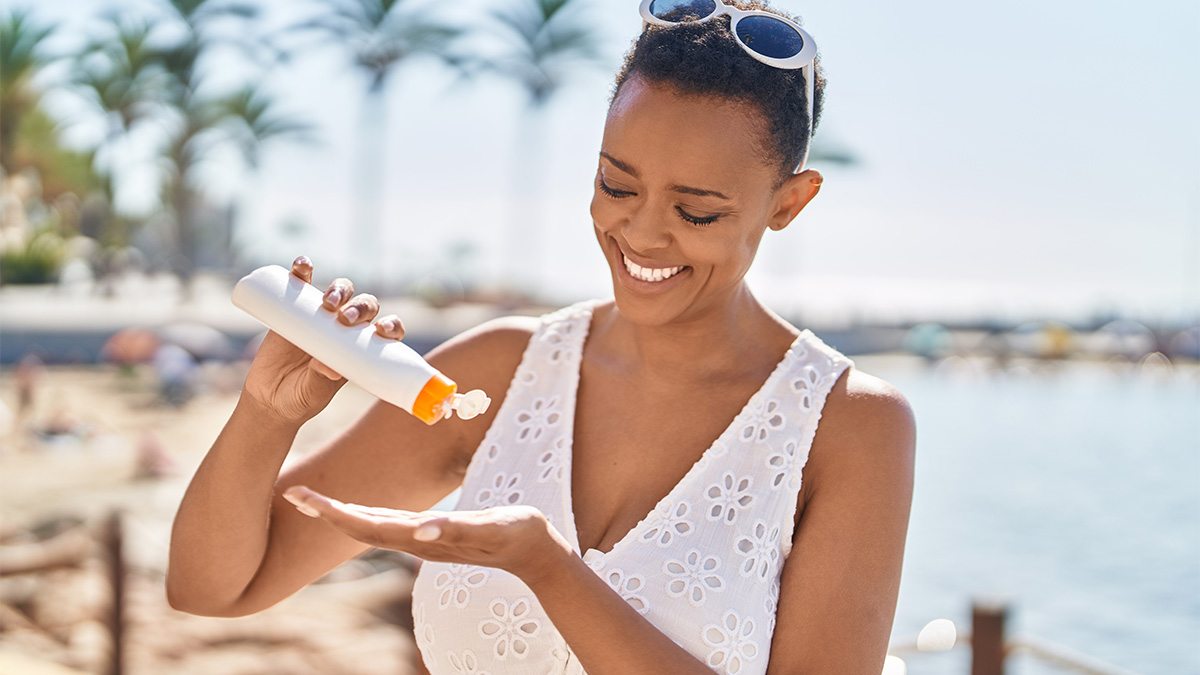Boost your sun protection with these tips
What’s the SPF sweet spot? Read on to learn that and more about reducing your risk of skin cancer and wrinkling.

Skin cancer is the most common form of cancer in the United States. Properly applying sunscreen can help prevent one of the main risk factors — sun exposure.
This is true even for people of color. While people with certain skin tones may be more or less likely to get sunburns, damage from the sun can occur even in the absence of sunburn. Everyone can develop skin cancer. In fact, skin cancer is usually diagnosed later in people of color, making it harder to treat.
With summertime activities now in full swing, The Well compiled the most important sunscreen advice from experts at UNC Health and Campus Health. Follow these tips when you’re planning outdoor activities this summer and year-round.
1. Look for broad-spectrum sunscreen.
You want protection from two types of ultraviolet rays: UVA and UVB. While they don’t penetrate as deeply as UVA rays, UVB rays play a bigger role in causing skin cancer. UVA rays can contribute to skin cancer as well but also cause premature skin aging and wrinkling because they penetrate deeper portions of the skin.
Broad-spectrum sunscreen shields against both types of UV rays, providing protection from both skin cancer and cosmetic damage to the skin.
2. Stay in the SPF sweet spot.
A sunscreen’s sun protection factor correlates to the level of protection provided against UVB rays. For instance, a sunscreen with an SPF of 30 protects against 97% of UVB rays. This level of protection is what’s generally recommended by dermatologists.
SPF 50 blocks 98% of UVB rays. Sunscreens with SPFs as high as 100 are available for purchase, but they offer only minimal additional protection. Regardless of SPF level, the Food and Drug Administration requires all sunscreens to maintain protection for at least three years. Most sunscreens have expiration dates listed. To stay in the SPF sweet spot, stick to 30-50 SPF and make sure your sunscreen has not exceeded the expiration date or isn’t older than three years.
3. Use the right amount and reapply.
As a rule of thumb, use 1 ounce of sunscreen — about one shot glass full — each time you apply it. Spread it on all parts of the skin that aren’t covered by clothing. Apply 15 minutes before you go outside. Reapply every two hours or more often if you’re getting wet or sweating.
4. Block the sun in other ways.
While sunscreen is a key tool, there are other ways to prevent sun damage and skin cancer.
- Seek shade, carry a sun umbrella and stay out of the sun when UV radiation is the strongest, from 10 a.m. to 4 p.m.
- Wear sunglasses with UV protective coating to protect the skin around the eyes and lower the risk of cataracts and macular degeneration.
- Wear long-sleeve shirts, pants, wide-brimmed hats and closed-toe shoes. This is especially important for babies, since infants should not wear sunscreen until they are 6 months old.
Check your body for melanoma.
While basal cell and squamous cell carcinomas are the two most-common skin cancers, melanoma is the deadliest and toughest to treat.
Self-monitor skin marks for potential warning signs of melanoma, making sure to show your medical provider. As a simple reminder, know your ABCDE’s:
A — Asymmetry: One half of a mark doesn’t match the other half.
B — Border: The mark has uneven borders.
C — Color: The mark has a variety of colors like brown, tan or black.
D — Diameter: The mark grows larger than the size of a pencil eraser (0.25 inches).
E — Evolution: The mark changes in size, shape, color or elevation. Also look to see if another trait or new symptom appears.




